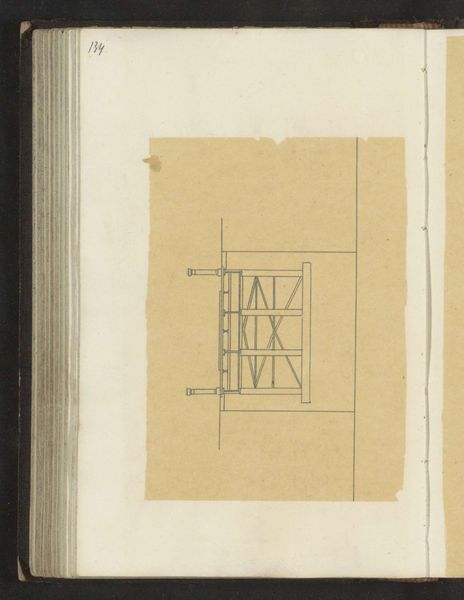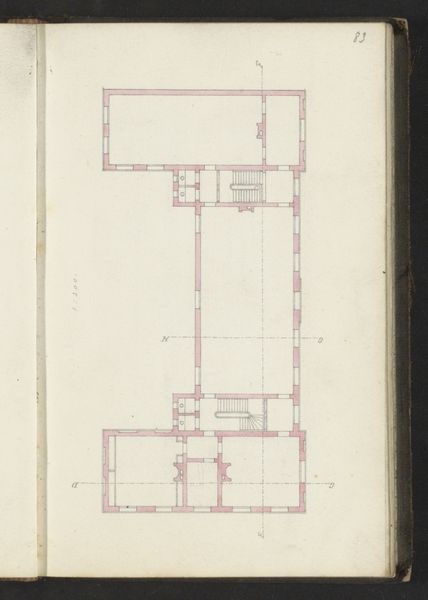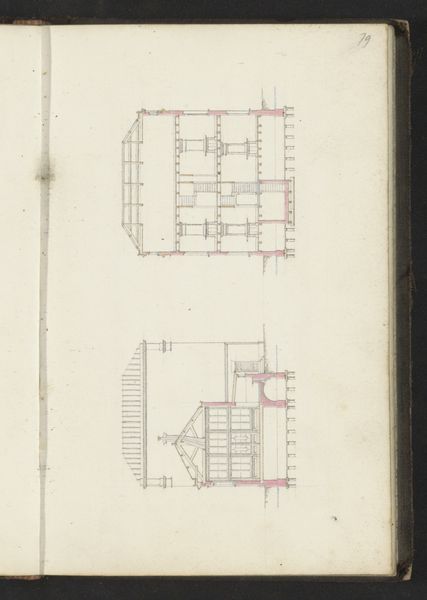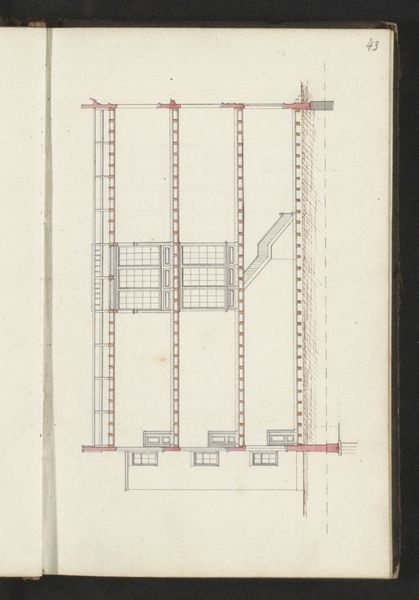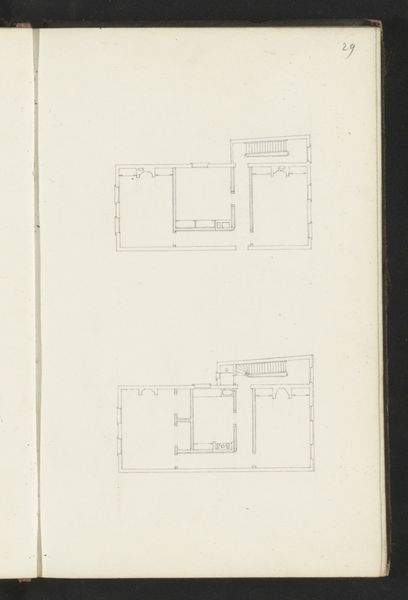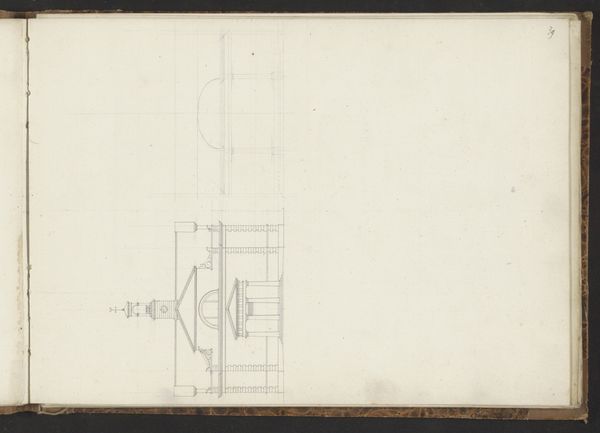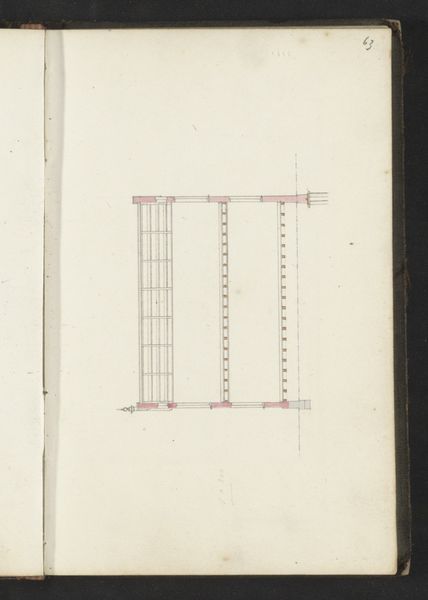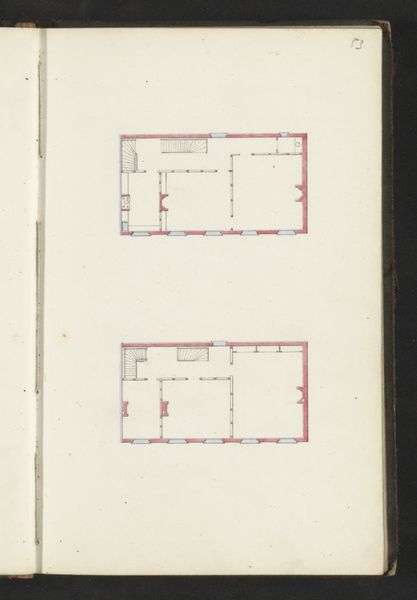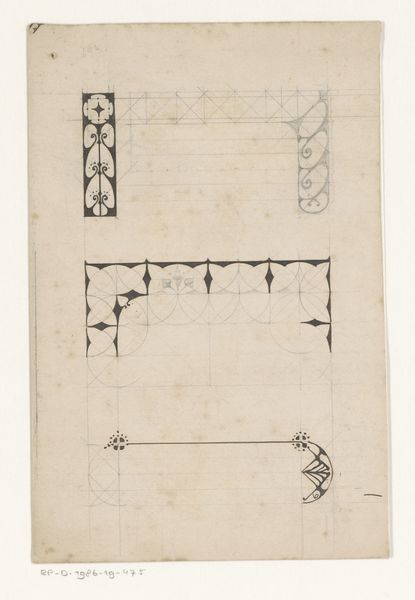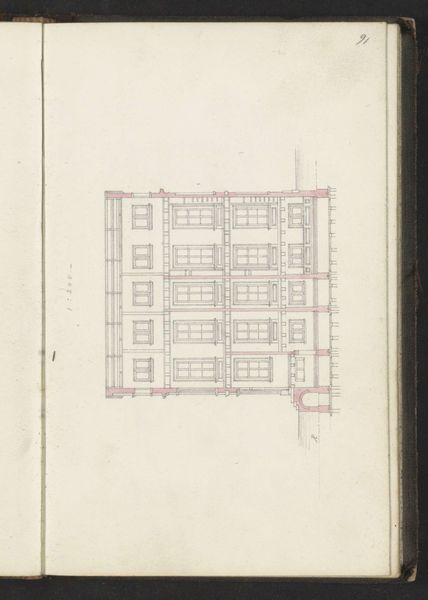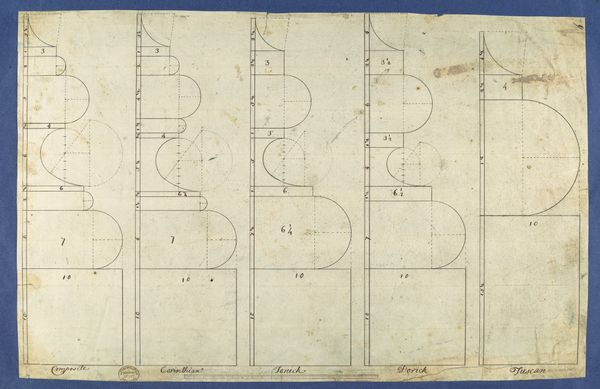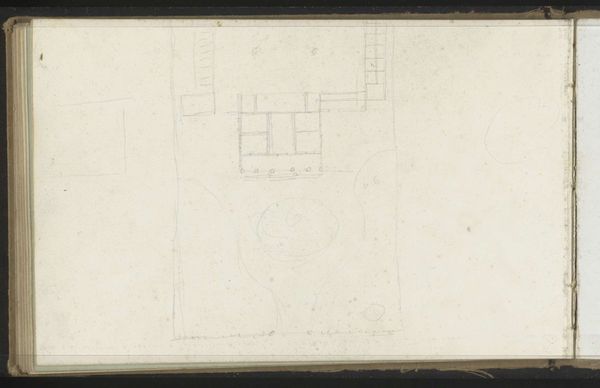
drawing, paper, pencil, architecture
#
drawing
#
aged paper
#
homemade paper
#
script typography
#
dutch-golden-age
#
sketch book
#
hand drawn type
#
landscape
#
paper
#
form
#
personal sketchbook
#
hand-drawn typeface
#
fading type
#
geometric
#
pencil
#
line
#
sketchbook drawing
#
sketchbook art
#
architecture
#
realism
Copyright: Rijks Museum: Open Domain
Curator: So, here we have Willem Springer Jr.’s “Fundering van een achtergebouw,” roughly translated as “Foundation of a Rear Building,” created around 1864. It’s a pencil and ink drawing on paper. What strikes you first about this unassuming sketch? Editor: The fragility, I think. The thin, faded lines, the aged paper… It feels incredibly vulnerable, like a half-remembered dream of a structure that might never have actually been built. There's a real sense of transience to it. Curator: Exactly! This piece offers a glimpse into the nuts and bolts of 19th-century architecture through the intimate lens of a sketchbook. I feel as though Springer, the artist, didn’t quite realize the implications of what he was holding in his hands, though. Editor: I’d push back slightly on that notion. The sketch appears to exist outside any grandiose statement about identity, nation, race or gender. It just *is*, but what it might say relates to power, urbanization, and industrialization of society. Building equals development, expansion equals taking over land for one's needs... or am I extrapolating too far? Curator: No, I love where you're going with this! But maybe this intimate drawing style points at Springer having had less direct connection to development policies than to craftsmanship, right? Each brick, each line... carefully considered. He renders space not as some abstract notion but as something physically tangible and almost touchable. It brings up this tension between power and the built environment itself... I can practically smell the timber. Editor: Perhaps Springer’s work subtly exposes the contradictions embedded in "development"—the imposition of a planned order onto chaotic human affairs… A gesture, a political assertion. After all, in our attempts to shape our world, there will also be decay of society if we think solely of that political assertion… Curator: That’s it; that's the connection that can tie political interpretation and intimate emotional impact together... it reveals something crucial about not only that society but ourselves. We look at an aged document, this intimate work, that reminds us that our current lives have a history, in construction but also deconstruction. We leave marks too. Editor: Ultimately, it reminds us of what's beneath the surface – both literally, in the foundation itself, and metaphorically, in the ideologies that structure our realities. Thank you for having allowed me to consider those ideological positions in today's dialogue!
Comments
No comments
Be the first to comment and join the conversation on the ultimate creative platform.

